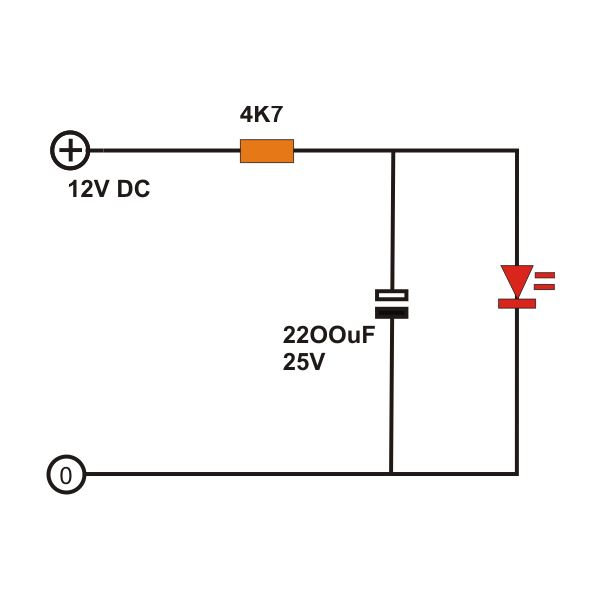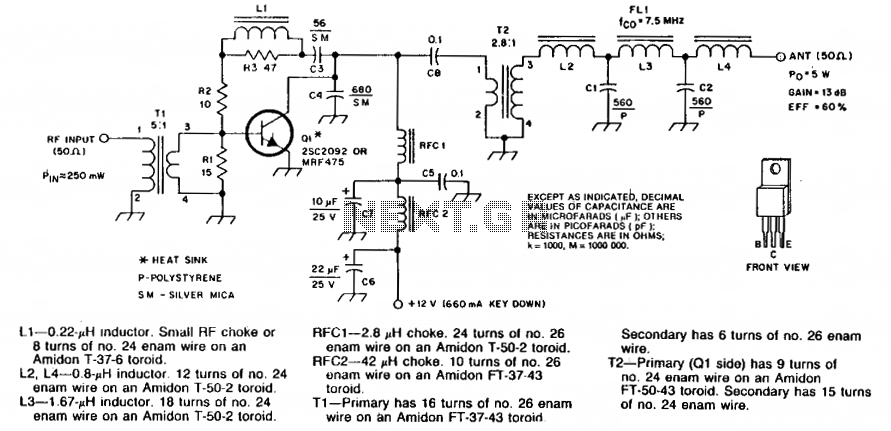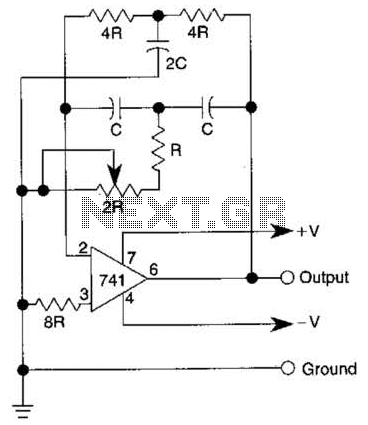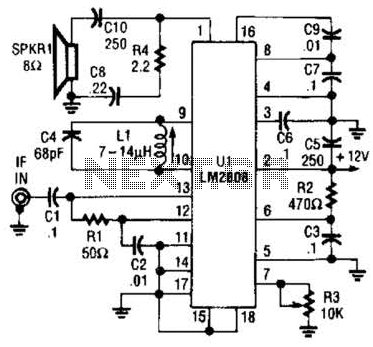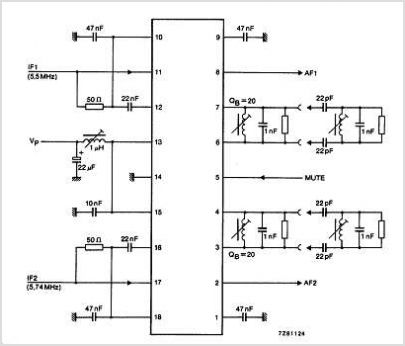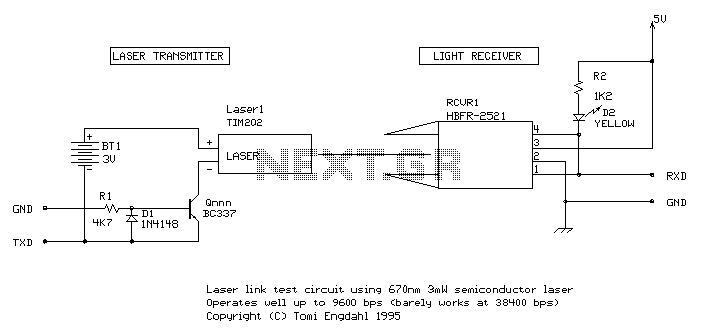
Laser power supply circuit
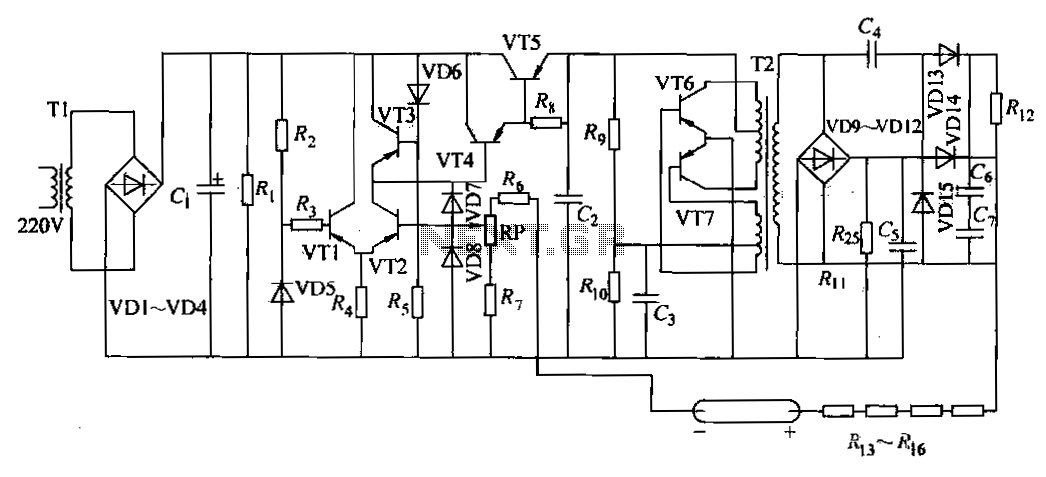
The DC power supply is a helium-neon laser excitation power supply, which is currently the most commonly used type of power supply. It is utilized in laser printers. The circuit includes a power transformer (T1), a high-voltage transformer (T2), a series transistor regulator circuit, a high-voltage rectifier, a filter, a current limiting circuit, and a steady flow circuit. This circuit has been tested and is functional. The alternating voltage is rectified by a bridge rectifier (VD1-VD4) and filtered by a capacitor (C1) to provide direct current voltage for the input of the series transistor regulator. The transistors (VT4 and VT5) are configured for complex adjustment, while the regulator circuit uses transistors (VT6 and VT7) in a common emitter configuration for push-pull output. High voltage is applied to the primary winding of transformer T2. The high voltage output from T2 is then rectified by another bridge rectifier (VD10-VD13) and filtered through capacitor C5 with an RC filter. The current limiting resistor is connected in series, allowing DC high voltage to be applied to the electrodes of the laser tube, facilitating the ignition of the lamp. The limiting resistor serves as a current limiting circuit to protect both the power supply and the laser discharge tube, preventing excessive discharge current after the starter is activated. The resistance value typically ranges from tens to hundreds of kilohms, depending on the discharge parameters.
The DC power supply circuit for a helium-neon laser excitation system is designed to efficiently convert and regulate electrical energy for optimal performance in laser applications. The circuit begins with a power transformer (T1), which steps down the input AC voltage to a lower level suitable for further processing. The high-voltage transformer (T2) is crucial for generating the high voltages required for laser operation.
The series transistor regulator circuit plays a vital role in maintaining stable output voltage. It uses a combination of transistors (VT4 and VT5) configured for fine voltage adjustment, ensuring that the output voltage remains consistent despite variations in load conditions. The push-pull configuration of transistors (VT6 and VT7) in the regulator circuit enhances efficiency by allowing the circuit to handle higher power levels effectively.
The rectification process is accomplished using a bridge rectifier (VD1-VD4), which converts the AC voltage from the transformer into pulsating DC voltage. This voltage is then smoothed out by a filter capacitor (C1), providing a stable DC input to the regulator. The output from the regulator is then fed into the primary winding of transformer T2, where it is transformed into a higher voltage necessary for laser operation.
The high-voltage output from T2 is rectified again using another bridge rectifier (VD10-VD13) and filtered through a capacitor (C5) and an RC filter to ensure that the output is a clean DC signal. The current limiting resistor is a critical component that prevents excessive current flow to the laser tube, which could otherwise lead to damage. This resistor is carefully selected based on the specific discharge parameters of the laser system, typically falling within the range of tens to hundreds of kilohms.
Overall, this circuit design ensures reliable operation of the helium-neon laser by providing a stable and safe power supply, which is essential for maintaining the performance and longevity of the laser system.DC power supply is a helium-neon laser excitation power supply currently used the most common form of power, there is shown a laser printer used in the road, Tl as power transf ormers, T2 is high-voltage transformer, the circuit consists of a series transistor regulator circuit, high-voltage rectifier, filter, limit the flow circuit and the steady flow circuit. This circuit is tested and functionable. alternating voltage VD1-VD4 bridge rectifier, filter capacitor Cl, output direct current voltage for series transistor regulator input voltage, VT4 VT5 composed of complex adjustment, the regulator circuit transistor VT6.
VT7 by common emitter connection for push-pull output, high voltage is applied to the primary winding of the transformer T2. High voltage output from the T2, ~ VD10-VD13 bridge rectifier, wind t, after c5 RC filter, and then through the current limiting resistor in series DC high voltage is applied to the electrodes of the laser tube, so that the lamp ignition point ignition, limiting resistor as a current limiting circuit, mainly used to protect the power supply and laser discharge tube, so that after the starter not to discharge current is too large, the resistance of a size generally in the tens to hundreds of kilohms kilohm range, depending on the discharge parameters may be.
The DC power supply circuit for a helium-neon laser excitation system is designed to efficiently convert and regulate electrical energy for optimal performance in laser applications. The circuit begins with a power transformer (T1), which steps down the input AC voltage to a lower level suitable for further processing. The high-voltage transformer (T2) is crucial for generating the high voltages required for laser operation.
The series transistor regulator circuit plays a vital role in maintaining stable output voltage. It uses a combination of transistors (VT4 and VT5) configured for fine voltage adjustment, ensuring that the output voltage remains consistent despite variations in load conditions. The push-pull configuration of transistors (VT6 and VT7) in the regulator circuit enhances efficiency by allowing the circuit to handle higher power levels effectively.
The rectification process is accomplished using a bridge rectifier (VD1-VD4), which converts the AC voltage from the transformer into pulsating DC voltage. This voltage is then smoothed out by a filter capacitor (C1), providing a stable DC input to the regulator. The output from the regulator is then fed into the primary winding of transformer T2, where it is transformed into a higher voltage necessary for laser operation.
The high-voltage output from T2 is rectified again using another bridge rectifier (VD10-VD13) and filtered through a capacitor (C5) and an RC filter to ensure that the output is a clean DC signal. The current limiting resistor is a critical component that prevents excessive current flow to the laser tube, which could otherwise lead to damage. This resistor is carefully selected based on the specific discharge parameters of the laser system, typically falling within the range of tens to hundreds of kilohms.
Overall, this circuit design ensures reliable operation of the helium-neon laser by providing a stable and safe power supply, which is essential for maintaining the performance and longevity of the laser system.DC power supply is a helium-neon laser excitation power supply currently used the most common form of power, there is shown a laser printer used in the road, Tl as power transf ormers, T2 is high-voltage transformer, the circuit consists of a series transistor regulator circuit, high-voltage rectifier, filter, limit the flow circuit and the steady flow circuit. This circuit is tested and functionable. alternating voltage VD1-VD4 bridge rectifier, filter capacitor Cl, output direct current voltage for series transistor regulator input voltage, VT4 VT5 composed of complex adjustment, the regulator circuit transistor VT6.
VT7 by common emitter connection for push-pull output, high voltage is applied to the primary winding of the transformer T2. High voltage output from the T2, ~ VD10-VD13 bridge rectifier, wind t, after c5 RC filter, and then through the current limiting resistor in series DC high voltage is applied to the electrodes of the laser tube, so that the lamp ignition point ignition, limiting resistor as a current limiting circuit, mainly used to protect the power supply and laser discharge tube, so that after the starter not to discharge current is too large, the resistance of a size generally in the tens to hundreds of kilohms kilohm range, depending on the discharge parameters may be.
